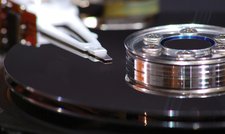Simplifying data backup on Android devices
Backup Assistant

© Photo by Jandira Sonnendeck on Unsplash
Linux Android Backup offers an open source solution to backing up the most important content from your Android devices in just a few steps.
Backing up data from a Linux installation doesn't pose a problem for most users thanks to open source solutions for almost every scenario, from a single machine to a cluster, as well as command line and GUI options. However, backing up Android devices such as smartphones or tablets can be a little trickier. Up until Android 4, backing up such devices was only possible if the bootloader was unlocked, and unlocking was no easy task because most manufacturers tried to prevent it. And if you did unlock the bootloader, you could void your warranty, and, even worse, risk bricking your device. An advance backup would have made sense, but it was only possible after rooting.
Starting with Android 4, adb backup [1] (which Google has since deprecated for security reasons) worked reliably without rooting, even between devices by different manufacturers, which differed from many other manufacturer tools or third-party apps. Today, the only official tool left for backups is Android Debug Bridge (ADB), which lets you control Android devices using a computer with Linux, macOS, or Windows. However, using ADB requires many manual steps and still comes with the risk of bricking the device.
Linux Android Backup (LAB), a fledgling project developed on GitHub, offers an alternative to ADB [2]. Under the hood, LAB, which consists of a small shell script and a Flutter app, greatly simplifies backing up Android devices. LAB works entirely without vendor lock-in or closed source software that could compromise your data. While the script is based on ADB, it does not use the deprecated adb backup command. Despite its name, LAB also works on macOS and Windows, in the Windows Subsystem for Linux (WSL) [3]. In fact, the developers are currently looking for a more suitable name.
[...]
Buy this article as PDF
(incl. VAT)
Buy Linux Magazine
Subscribe to our Linux Newsletters
Find Linux and Open Source Jobs
Subscribe to our ADMIN Newsletters
Support Our Work
Linux Magazine content is made possible with support from readers like you. Please consider contributing when you’ve found an article to be beneficial.

News
-
Manjaro 26.0 Primary Desktop Environments Default to Wayland
If you want to stick with X.Org, you'll be limited to the desktop environments you can choose.
-
Mozilla Plans to AI-ify Firefox
With a new CEO in control, Mozilla is doubling down on a strategy of trust, all the while leaning into AI.
-
Gnome Says No to AI-Generated Extensions
If you're a developer wanting to create a new Gnome extension, you'd best set aside that AI code generator, because the extension team will have none of that.
-
Parrot OS Switches to KDE Plasma Desktop
Yet another distro is making the move to the KDE Plasma desktop.
-
TUXEDO Announces Gemini 17
TUXEDO Computers has released the fourth generation of its Gemini laptop with plenty of updates.
-
Two New Distros Adopt Enlightenment
MX Moksha and AV Linux 25 join ranks with Bodhi Linux and embrace the Enlightenment desktop.
-
Solus Linux 4.8 Removes Python 2
Solus Linux 4.8 has been released with the latest Linux kernel, updated desktops, and a key removal.
-
Zorin OS 18 Hits over a Million Downloads
If you doubt Linux isn't gaining popularity, you only have to look at Zorin OS's download numbers.
-
TUXEDO Computers Scraps Snapdragon X1E-Based Laptop
Due to issues with a Snapdragon CPU, TUXEDO Computers has cancelled its plans to release a laptop based on this elite hardware.
-
Debian Unleashes Debian Libre Live
Debian Libre Live keeps your machine free of proprietary software.

